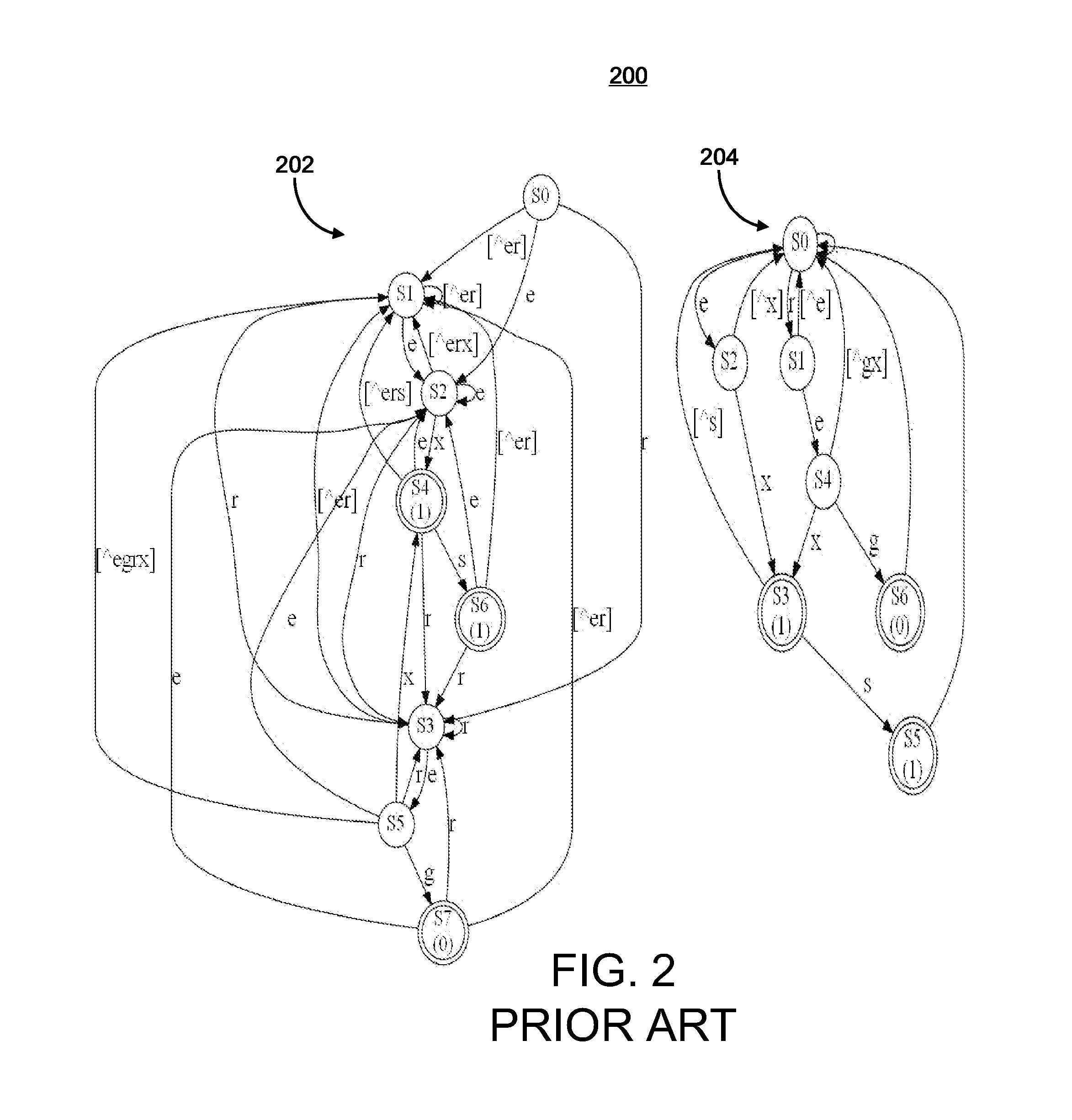Deterministic finite automation minimization
- Summary
- Abstract
- Description
- Claims
- Application Information
AI Technical Summary
Benefits of technology
Problems solved by technology
Method used
Image
Examples
Embodiment Construction
[0017]Embodiments of systems and methods for deterministic finite automaton (DFA) minimization are provided, with exemplary embodiments being discussed below in detail. A multi-stage approach for realizing fast and efficient DFA minimization that can scale to very large DFAs (e.g., involving hundreds of millions of states) partitions DFA minimization into an initial minimization stage followed by a higher precision final minimization stage. The first stage applies a simple and fast heuristic for initial minimization to output a first-stage minimized DFA but does not necessarily result in an optimal minimization. The second stage is performed on the first-stage minimized DFA, and involves a known minimization algorithm to produce a minimized DFA. The second stage can apply, for example, a table-filling DFA minimization algorithm or a Hopcroft DFA minimization algorithm, which are much slower and more memory consuming algorithms than the first-stage minimization algorithm, but achieve...
PUM
 Login to View More
Login to View More Abstract
Description
Claims
Application Information
 Login to View More
Login to View More - R&D
- Intellectual Property
- Life Sciences
- Materials
- Tech Scout
- Unparalleled Data Quality
- Higher Quality Content
- 60% Fewer Hallucinations
Browse by: Latest US Patents, China's latest patents, Technical Efficacy Thesaurus, Application Domain, Technology Topic, Popular Technical Reports.
© 2025 PatSnap. All rights reserved.Legal|Privacy policy|Modern Slavery Act Transparency Statement|Sitemap|About US| Contact US: help@patsnap.com



